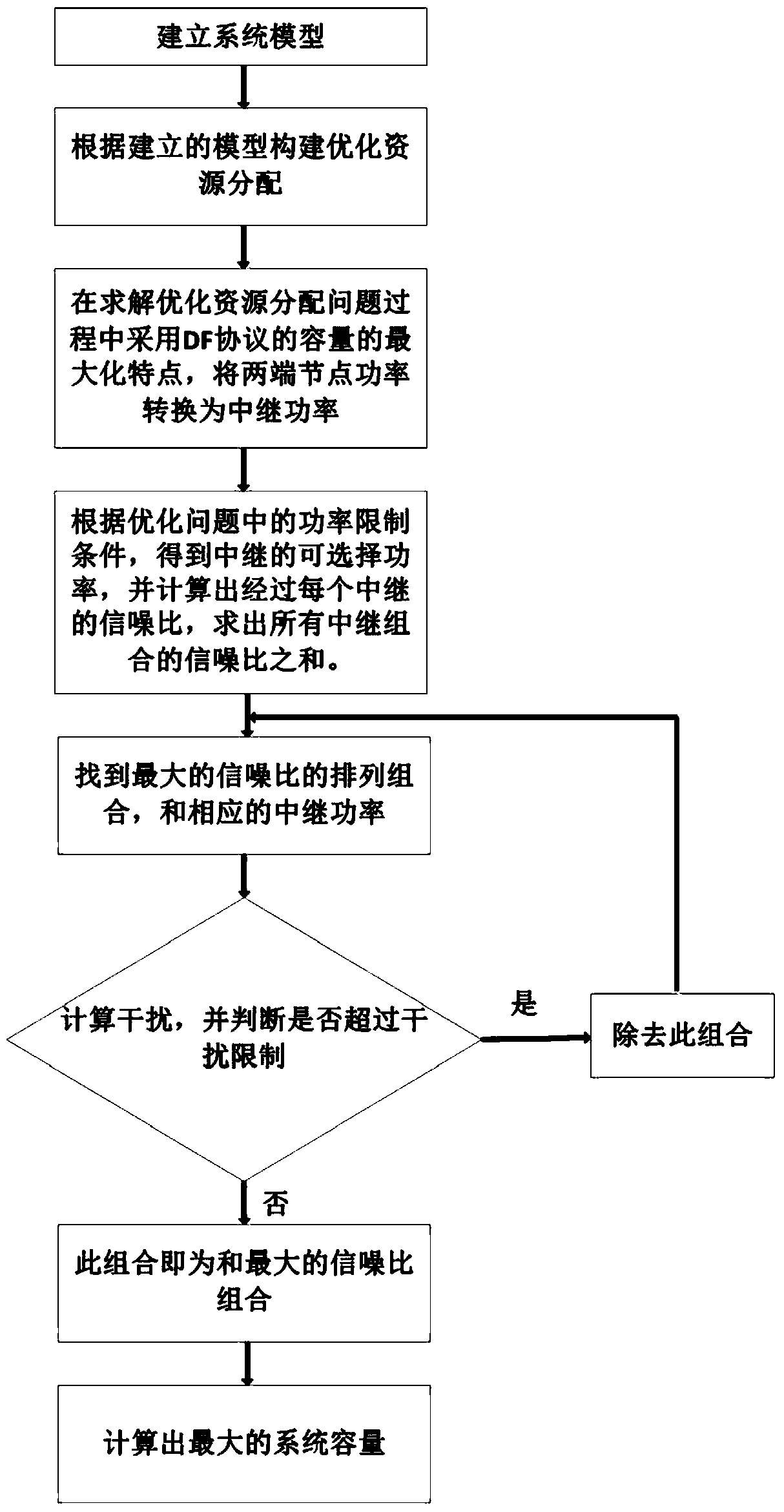Resource allocation method in two-way relay cognitive radio system based on df protocol
A cognitive radio and two-way relay technology, which is applied in the field of resource allocation in a two-way relay cognitive radio system, can solve problems such as high complexity, inability to obtain high system capacity, and difficulty in solving problems
- Summary
- Abstract
- Description
- Claims
- Application Information
AI Technical Summary
Problems solved by technology
Method used
Image
Examples
Embodiment Construction
[0075] The present invention will be further described in detail below in conjunction with the accompanying drawings and embodiments.
[0076] A resource allocation method in a two-way relay cognitive radio system based on the DF protocol proposed by the present invention, its overall realization block diagram is as follows figure 2 As shown, it includes the following steps:
[0077] ①Set each channel in the two-way relay cognitive radio system to adopt the Dorelli fading model; set the two-way relay cognitive radio system to consist of a cognitive mobile user, a base station, M relays and an authorized user , denote the cognitive mobile user, base station, mth relay and authorized user as S, CB, RS m and PU, such as figure 1 As shown, where M>1, M=4 in this embodiment, 1≤m≤M; it is assumed that there is no direct link between the cognitive mobile user and the base station, and L relays need to be selected for signal transmission, Among them, 1≤L≤M.
[0078] It is set tha...
PUM
 Login to View More
Login to View More Abstract
Description
Claims
Application Information
 Login to View More
Login to View More - R&D
- Intellectual Property
- Life Sciences
- Materials
- Tech Scout
- Unparalleled Data Quality
- Higher Quality Content
- 60% Fewer Hallucinations
Browse by: Latest US Patents, China's latest patents, Technical Efficacy Thesaurus, Application Domain, Technology Topic, Popular Technical Reports.
© 2025 PatSnap. All rights reserved.Legal|Privacy policy|Modern Slavery Act Transparency Statement|Sitemap|About US| Contact US: help@patsnap.com



